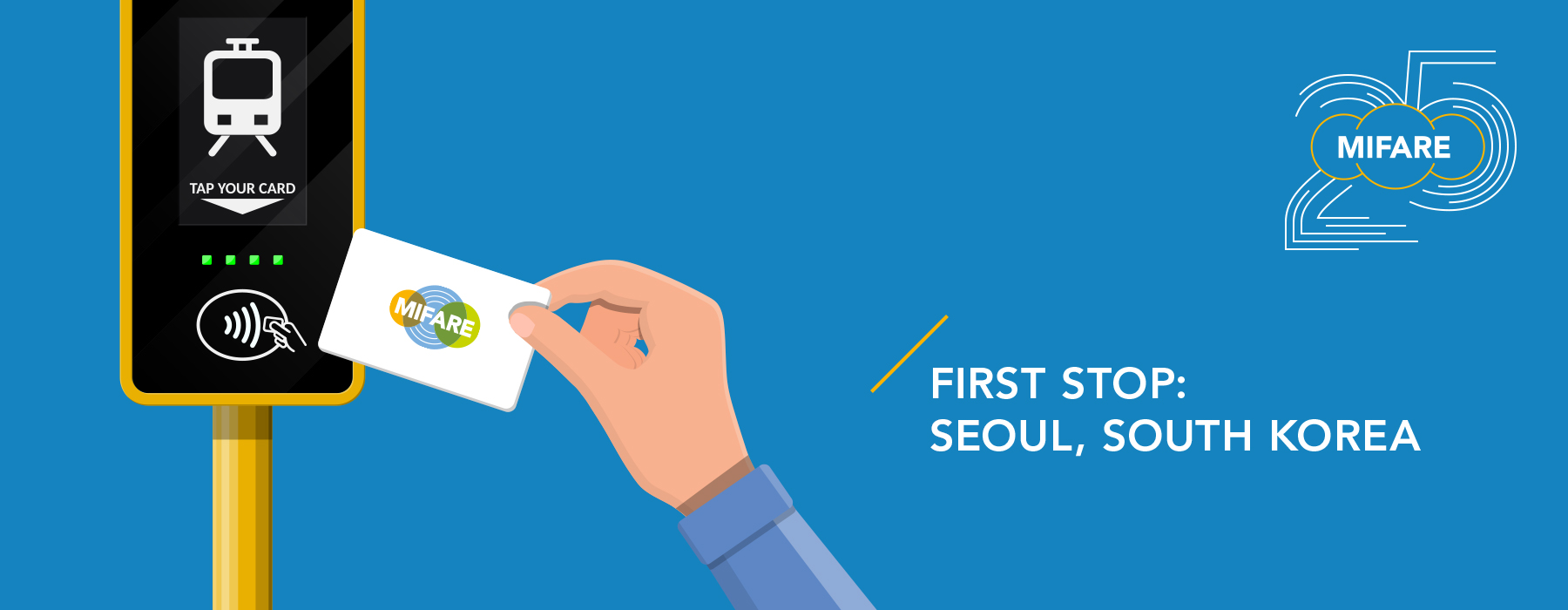Celebrating Innovation: 25 Years of MIFARE and “THE NEW NORMAL” 12. August 2019
One NXP innovation that has created a long list of new normals is MIFARE®. Working behind the scenes, and without a lot of fanfare, MIFARE ICs have achieved remarkable longevity, with 25 years of positive innovation to their credit.
The First New Normal: Transport
The story begins in the early 1990’s, when three NXP engineers, working in one of our offices in Austria, performed a bit of magic and created what is now known as MIFARE. Their goal was to improve the way we pay to use public transport. Instead of putting a coin or token or paper ticket into a machine that was prone to jamming, all you had to do was take your contactless ticket (with a MIFARE product inside), tap the ticket to a reader, and be on your way.
Contactless revolution in transport ticketing began to gather momentum in Seoul, South Korea, in 1996, where bus and rail commuters began using contactless fare cards. Rush hour became a little more manageable, with less waiting in line and less frustration over mechanical malfunctions.
Since then, contactless ticketing has taken off. Today, major cities around the world use MIFARE for transit systems and MIFARE has become the new normal in public transport.

The Ongoing Revolution
As it turned out, transport ticketing was just the beginning for MIFARE and the new normal. Since those early days in Seoul, MIFARE has never really slowed down. The tap-and-go convenience of MIFARE has found its way into more than 40 application types, creating new normals in a remarkably broad category of use cases.
MIFARE chips, in all their form factors, have entered our lives in many ways. Think about contactless key cards at hotels and resorts, attendees of concerts, sporting events, and music festivals are using MIFARE equipped cards or tickets to enter venues and pay for snacks and souvenirs without waiting in long lines or hassling with cash, employees use MIFARE ICs in badges to identify themselves when entering the company´s premises. Even universities, colleges, and other educational facilities are putting MIFARE to work, using it in student IDs that give learners access to classrooms and let them pay for meals while on campus.
Add it all up, and more than 1.2 billion people, in over 750 cities worldwide, use MIFARE on a daily basis. Every day, there’s someone, somewhere, using MIFARE, whether it’s in a smart card, a smartphone, a wristband, or some other portable or wearable item.
Read this LinkedIn article and find out more about MIFARE´s continuous innovation.
